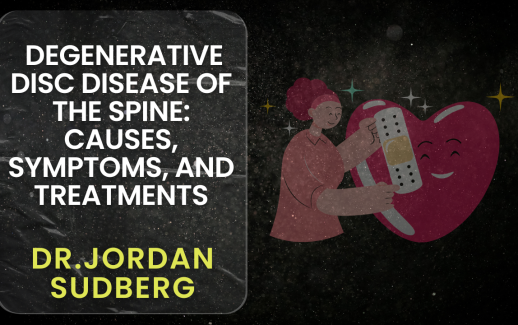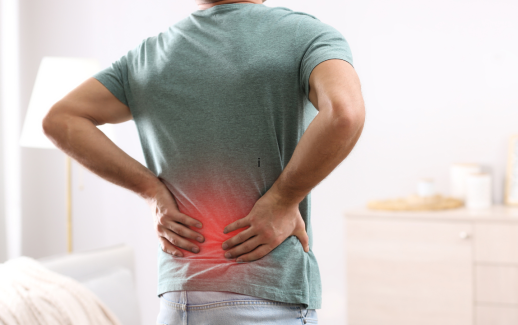Dr. Jordan Sudberg Explores Environmental Toxins: Uncovering Their Possible Role in Chronic Pain Disorders
Chronic pain disorders affect millions of people worldwide, often with complex and multifactorial causes. While genetics, injury, and lifestyle factors are widely studied, one area gaining increasing attention is the role of environmental toxins in contributing to or exacerbating chronic pain. These hidden pollutants, found in everyday surroundings, may silently influence the nervous system and inflammatory responses, potentially playing a significant role in persistent pain conditions.
Pain management specialist Dr. Jordan Sudberg sheds light on this emerging field, discussing how environmental toxins could impact chronic pain and what patients can do to protect themselves.
Understanding Environmental Toxins: What Are They?
Environmental toxins are substances present in the air, water, soil, or manufactured products that can cause harm to human health. Common examples include:
- Heavy metals: such as lead, mercury, arsenic, and cadmium
- Pesticides and herbicides: chemicals used in agriculture to control pests and weeds
- Industrial chemicals: including solvents, polychlorinated biphenyls (PCBs), and volatile organic compounds (VOCs)
- Air pollutants: like particulate matter, nitrogen oxides, and ozone
- Endocrine disruptors: chemicals such as BPA found in plastics that interfere with hormone function
These toxins can enter the body through inhalation, ingestion, or skin contact, sometimes accumulating over time and causing chronic health issues.
How Environmental Toxins May Influence Chronic Pain
Dr. Jordan Sudberg explains that while research is still evolving, several mechanisms suggest how environmental toxins might contribute to or worsen chronic pain disorders:
1. Neurotoxicity and Nervous System Damage
Many toxins directly affect the nervous system, damaging nerve cells or disrupting their function. Heavy metals like mercury and lead are neurotoxic and can alter nerve signaling, potentially leading to neuropathic pain.
“When nerve cells are damaged or misfire due to toxin exposure, the brain may interpret these signals as pain, even without an obvious injury,” Dr. Sudberg notes.
2. Chronic Inflammation
Some environmental toxins trigger systemic inflammation, a known driver of many chronic pain conditions such as fibromyalgia, rheumatoid arthritis, and chronic fatigue syndrome.
Toxins can activate immune cells to release inflammatory cytokines, perpetuating a cycle of pain and tissue damage.
3. Hormonal Disruption
Endocrine-disrupting chemicals interfere with hormone balance, which can affect pain perception and sensitivity. Hormonal imbalances can exacerbate conditions like migraine and temporomandibular joint disorder (TMJ).
4. Mitochondrial Dysfunction
Certain toxins impair mitochondrial function—the cell’s energy powerhouse. Without adequate energy, cells cannot repair or maintain themselves properly, leading to fatigue and pain.
Evidence Linking Environmental Toxins and Chronic Pain
While definitive causality is difficult to establish due to the complexity of chronic pain and individual differences in toxin exposure, a growing body of research supports this connection.
- Heavy metals and neuropathy: Studies show elevated mercury and lead levels in patients with peripheral neuropathy and chronic pain.
- Pesticides and autoimmune diseases: Exposure to pesticides has been linked to autoimmune disorders like lupus and multiple sclerosis, conditions often accompanied by chronic pain.
- Air pollution and inflammation: Living in areas with high air pollution correlates with increased reports of chronic pain and inflammatory diseases.
Dr. Sudberg cautions,
“It’s important to view environmental toxins as one piece of a larger puzzle. Genetics, lifestyle, and other health conditions all interplay in chronic pain development.”
What Patients Can Do to Minimize Risk
While avoiding all environmental toxins is impossible, Dr. Jordan Sudberg recommends practical steps to reduce exposure and potentially alleviate related pain symptoms:
1. Improve Indoor Air Quality
- Use air purifiers with HEPA filters to reduce particulate matter.
- Avoid smoking indoors and reduce use of chemical cleaning agents with strong fumes.
- Ensure proper ventilation in living and working spaces.
2. Be Mindful of Food and Water Sources
- Choose organic produce when possible to limit pesticide ingestion.
- Use water filters to remove heavy metals and contaminants.
- Avoid plastic containers containing BPA and other endocrine disruptors, opting for glass or stainless steel.
3. Limit Exposure to Industrial Chemicals
- Be cautious around solvents, paints, and other chemicals; use protective equipment if exposure is necessary.
- Properly dispose of hazardous household waste and avoid bringing toxins indoors.
4. Detoxification Support
While “detox” regimens are often overhyped, supporting your body’s natural elimination pathways through hydration, balanced nutrition, and exercise can aid in managing toxin load.
Integrating Environmental Awareness into Pain Management
Dr. Jordan Sudberg emphasizes that incorporating environmental health considerations into chronic pain management represents a holistic and forward-thinking approach.
“Treating pain effectively means looking beyond symptoms to identify underlying contributors. Environmental toxins may be one such factor, especially in cases resistant to standard treatments.”
He encourages patients to discuss their environmental exposures with healthcare providers and consider toxin screening if appropriate.
Future Directions: Research and Innovation
The intersection of environmental health and pain medicine is a promising research frontier. Emerging technologies in biomonitoring and personalized medicine may soon enable more precise identification of toxin-related pain.
Furthermore, public health efforts to reduce pollution and chemical exposures will have downstream benefits for reducing chronic pain prevalence.
Final Thoughts
Chronic pain is a complex, multifaceted condition that challenges patients and clinicians alike. The growing awareness of environmental toxins as potential contributors adds a critical layer of understanding that could transform pain management.
Thanks to experts like Dr. Jordan Sudberg, patients have access to insights that empower them to take control—not only through traditional treatments but also by addressing environmental factors.
If you’re struggling with unexplained or persistent pain, consider whether environmental toxins might be playing a role. Small lifestyle changes and informed discussions with your healthcare team can make a significant difference.

